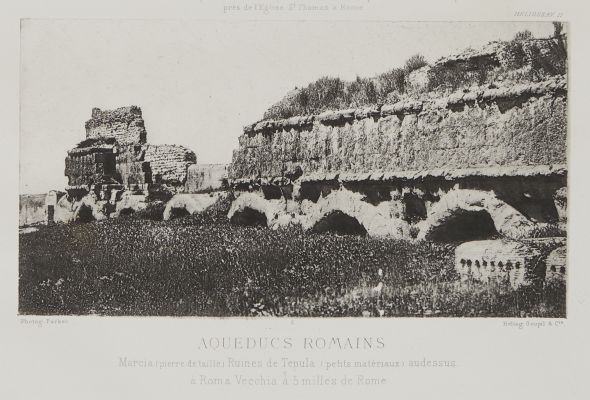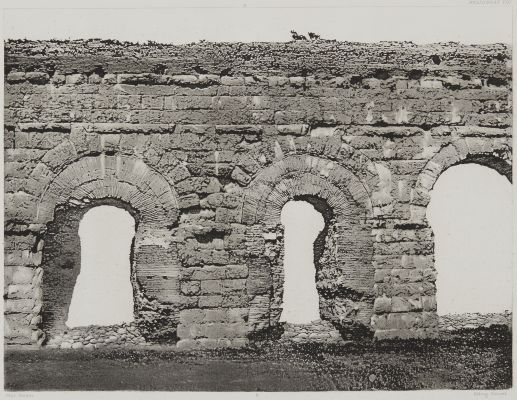
Title
Heliograv IArtist
Parker, John Henry (British, 1806-1884)Publication
Les Travaux Souterrains de Paris II, Les Eaux: Première Partie, Les Eaux. Introduction Les Aqueducs Romains, AtlasDate
1875Process
PhotogravureAtelier
DrivetImage Size
17 x 21.2 cm
By 1850 the water system in Paris was failing. Wastewater was being discharged directly into the Seine, the city’s primary source of drinking water. When Napoleon III took power in 1852 he had ambitious plans to modernize the city. In 1853 he appointed Georges-Eugène Haussmann to advance his plans and in 1855 Haussmann enlisted Eugène Belgrand as Director of Water and Sewers. Under Belgrand’s direction, Paris’s waterworks became one of the celebrated icons of 19th century technical advancement and modernization. Belgrand considered it his national duty to document the accomplishment.
In five parts, Les Travaux Souterrains de Paris documents Belgrand’s massive project. It is also an incunabula of photogravure in mid to late 19th century France. Over the twelve year period of its publication, Les Travaux printed examples of photogravures by Drivet, Goupil and Dujardin. Taking advantage of not only hydro engineering cutting edge technology, Haussmann tapped the cutting edge technical advancements in photography and printing – namely the photogravure – to promote the project internationally.
Drivet is not one of the early photogravure practitioners usually discussed. Waterhouse mentioned him in his essays in the Photographic News and displayed one of his prints at the Victoria and Albert. Samuel Wagstaff had a Drivet print in his photomechanical exhibit at the Grolier Club, and Andre Jammes exhibited a Drivet at his Intaglio exhibit in Switzerland. The process of Drivet for engraving plates is not described, but the principle of it can be gathered from the specification of the patent. At the same that the image of the object is exposed on a prepared collodion plate in the camera, the image of a sheet of white paper, covered with closely ruled black lines, is exposed upon the same plate, and at the same time, through another opening from an exactly opposite direction. A negative is thus obtained which would print a positive picture having the required lines in the high lights obliterated, and intensely developed in the deep shadows. A gelatin picture printed as in woodbury’s process, gives the matrix from which an electrotype plate is produced, to be printed from as an engraved copper plate the results are undoubtedly the most beautiful and practical yet achieved.
References
Peter J. Holliday, The Fascination with the Past, John Henry Parker’s Photographs of Rome, California State University Art Gallery, San Bernadino, 1991, no. 24
Hanson, David Checklist of photomechanical processes and printing 1825-1910, 2017
Hanson, David A. The David A. Hanson Collection of the History of Photomechanical Printing. The Sterling and Francine Clark Art Institute. Catalog 2000









